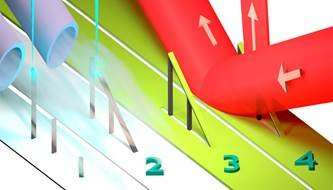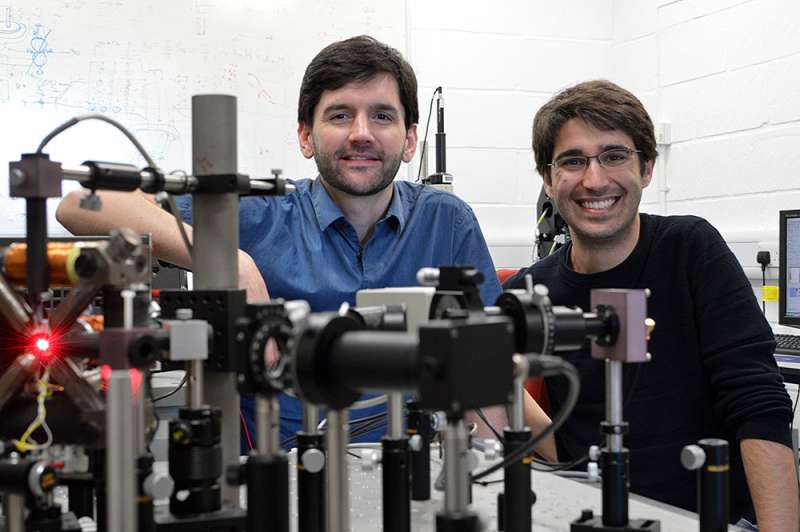Three-dimensional nanomagnets for the computer of tomorrow

Since the late 1960's, electronic devices have stored and transmitted information (bits) in two-dimensional circuits. Now, researchers at the University of Cambridge have created a nanoscale magnetic circuit capable of moving information through three-dimensional space. This breakthrough could lead to an important increase in storage and processing capacities of electronic devices over those used today.
With current technologies reaching the limits of what physics allows, researchers are starting to explore the third dimension in search for a route to improving electronic devices.
In a recent study published in the journal ACS Nano, researchers at the University of Cambridge (UK) and TU Eindhoven (Netherlands), demonstrate that combining the most advanced techniques in 3-D nano-printing with traditional methods enables functional circuits that can process information.
"We demonstrate a new way to fabricate and use a magnetic device which, in a nanometric scale, can controllably move information along the three dimensions of space," highlights Amalio Fernández-Pacheco, principal investigator of the project at the Cavendish Laboratory in Cambridge. To create these nano-magnets in 3-D an electron microscope is used along with a gas injector to 3-D print a suspended scaffold on a traditional 2-D Silicon substrate. After 3-D nano-printing, magnetic material is deposited over the whole ensemble to allow information transport.

By combining a precise fabrication protocol with a tailor-made laser system, the authors have detected structures that are almost completely suspended and have widths of only 300 nanometers.
"In this work, we not only demonstrate a big leap in nanofabrication capacities, but also, we have developed a system that allows us to look at these tiny devices in a relatively simple way," says Dédalo Sanz-Hernández, leader of this work.
"The information within the device can be read using a single laser in dark-field configuration (a technique designed to isolate small objects from bright backgrounds)," he explains.
This breakthrough is part of the broader field of spintronics. Spintronics technologies not only exploit the electrical charge electrons to store and process information, but also their spin, allowing the development of electronic circuits that benefit from greater energy efficiency than current technologies.
"Projects such as this one open the path to the development of a completely new generation of magnetic devices that can store move and process information in a very efficient way by exploiting the three dimensions of space," says Fernández-Pacheco.
More information: Dédalo Sanz-Hernández et al. Fabrication, Detection, and Operation of a Three-Dimensional Nanomagnetic Conduit, ACS Nano (2017). DOI: 10.1021/acsnano.7b05105
Journal information: ACS Nano
Provided by Plataforma SINC





















